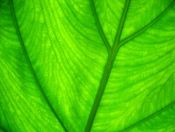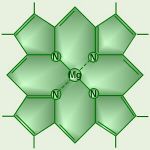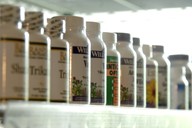
|
If
you think you are missing any nutrients in your diet you will find
it in Wheatgrass.
The Amazing
Nutrients of Wheatgrass:
So
if your looking for a protein,
vitamin, mineral, antioxidant, or enzyme supplement, here’s
where you’ll find it. It’s an all
in one, concentrated, overall source of nutrition. Charles
F. Schnabel, an agricultural chemist, discovered that 15 lbs. of
Wheatgrass is equivalent
to 350 lbs.
of the choicest
vegetables.
|
|
The Magic of
Chlorophyll in Wheatgrass
 The
chlorophyll in wheatgrass acts like a magnet and attaches to all sorts
of trash floating around in the blood stream, including toxic metals
such as mercury. It will wash away drug deposits from the body,
neutralize toxins, helps to clean and purify the liver, prevents aging,
and stabilizes blood sugar levels (excellent for diabetics). It
enriches the blood; removes blood disorders, and lowers blood
pressure. The
chlorophyll in wheatgrass acts like a magnet and attaches to all sorts
of trash floating around in the blood stream, including toxic metals
such as mercury. It will wash away drug deposits from the body,
neutralize toxins, helps to clean and purify the liver, prevents aging,
and stabilizes blood sugar levels (excellent for diabetics). It
enriches the blood; removes blood disorders, and lowers blood
pressure. Many women have a problem with low iron in their blood (anemia). Well, here's your fix ladies. Experiments proved that severely anemic rabbits make a rapid return to a normal blood count once chlorophyll is administered. The reason it is so effective is because the chemical structure of chlorophyll it is nearly identical to Hemin, which is a part of Hemoglobin,  the protein part
of the blood that carries oxygen. Because the body is able to
rebuild the blood with chlorophyll it is like virtually giving an
anemic patient a blood transfusion. the protein part
of the blood that carries oxygen. Because the body is able to
rebuild the blood with chlorophyll it is like virtually giving an
anemic patient a blood transfusion.If you’re an athlete I hope you thought about that last paragraph. The chlorophyll will help build more red blood cells so that you can carry more oxygen! Many runners have noticed a great improvement in their training when taking grass. Bruce McVay from Salt Lake City, Utah is an ultra-distance runner (races from 30 to 100 miles or more). He tried every food enhancing supplement and natural food source to improve his health, stamina, and oxygenation process. After learning about the superior effects, he started taking daily doses of wheatgrass. After 1 to 2 months of cleansing, which consisted of a few headaches and itching, he noticed a drastic improvement in his performance, energy, and stamina. Before taking wheatgrass he was always a middle to rear of the pack racer. After a short time he was winning these grueling races. Check out his victories in “Wheatgrass Natures Finest Medicine” by Steve Meyerowitz. The chlorophyll in wheatgrass will also provide us with protection against X-ray radiation from hospital equipment, televisions, computer screens, transmitters and microwaves. Chlorophyll has long been famous for its ability to heal infected and ulcerated wounds. Studies have proven that tissue cell activity and its normal regrowth are definitely increased by using chlorophyll. You can use this stuff anywhere on or in the body where there is infection or disease. It’s great medicine for healing bleeding gums, canker sores, trench mouth, pyorrhea, gingivitis, and even sore throat. I can personally attest to whiter cleaner teeth after holding a ¾ shot of wheatgrass juice in my mouth for about 15min. It is a great antibacterial cleanser. I’ve even noticed where some movie producers have added scenes that have shown people chewing up different types of green herbs and then placing the chewed pulp on the wounds of people and animals. If you ever see this, now you’ll know why. |
